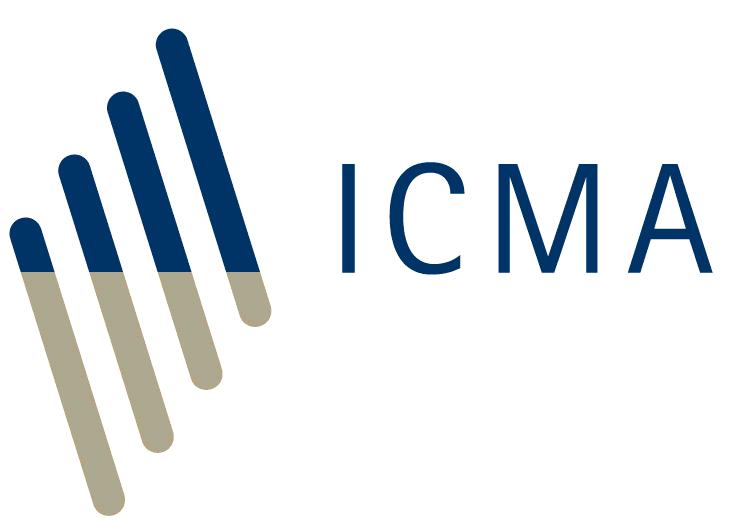| Altcoin | A cryptocurrency or a category of cryptocurrencies that are an alternative to bitcoin. Many altcoins project themselves as better alternatives to bitcoin in various ways (e.g. more efficient, less expensive, etc.). |
| Application Programming Interface | An application programming interface (API) is a set of protocols, routines, functions and/or commands that programmers use to develop software or facilitate interaction between distinct systems. APIs are available for both desktop and mobile use, and are typically useful for programming GUI (graphic user interface) components, as well as allowing a software program to request and accommodate services from another program. |
| Bitcoin (BTC) | A type of cryptocurrency created by Satoshi Nakamoto in 2009. It was one of the first digital currencies that enabled instant P2P payments. Bitcoins are created through a process known as bitcoin mining that requires a massive amount of computing power. For more information, please see the Bitcoin whitepaper. |
| Blockchain | A decentralized, digital ledger where transactions made in Bitcoin or other cryptocurrencies are recorded chronologically and publicly. The block contains information that, once it goes into the blockchain, it becomes part of the permanent and immutable database, connecting to other blocks in the blockchain like the links in a chain. |
| Consensus protocol | A process, encoded in software, by which computers in a network, called nodes, reach an agreement about a set of data. |
| Crypto Token | Crypto tokens are special kind of virtual currency tokens that reside on their own blockchains and represent an asset or utility. Such crypto tokens often serve as the transaction units on the blockchains that are created using the standard templates like that of Ethereum network that allows a user to create his/her own tokens. |
| Cryptocurrency | A type of digital currency that is generally decentralized and uses cryptography (i.e. data is converted into a format that is unreadable for unauthorized users) for added security, making it difficult to counterfeit or manipulate. |
| dAPP | Decentralized Application. This refers to an application that uses an Ethereum smart contract as it’s back-end code. |
| Distributed Ledger Technology | A system, most commonly a blockchain, for creating a shared, cryptographically secured database. |
| ERC-20 | A token standard for Ethereum, used for smart contracts implementing tokens. It is a common list of rules defining interactions between tokens, including transfer between addresses and data access. |
| ERC-721 | A token standard for non-fungible Ethereum tokens. An Ethereum Improvement Proposal introduced in 2017, it enables smart contracts to operate as tradeable tokens similar to ERC-20 tokens. |
| Ethereum | An open source, decentralized platform based on blockchain technology created by Vitalik Buterin in 2013. It runs smart contracts on a custom built blockchain that allows developers to create markets, store registries of debts, and so on. For more information, please visit the Ethereum Foundation website or read their whitepaper. |
| FIX protocol | Financial Information eXchange (FIX) is a vendor-neutral electronic communications protocol for international real-time exchange of securities transaction information, which is useful to funds, investment managers, and firms. FIX systems transfer accurate and timely financial information concerning securities trades through and across security exchange houses. Its use enables users to make timely and accurate decisions. FIX has become as the de-facto messaging standard for pre-trade, trade and post-trade communication as well as for U.S. regulatory reporting. It is compatible with almost every commonly used network technology. |
| Fork | A change to the way a blockchain’s software rules define valid transactions, or blocks. Hard fork: A change to the rules that all nodes on a network must adopt, or else leave the network./Soft fork: A backwards-compatible change that hinges only on a majority of nodes’ adopting the new rules. |
| Genesis block | The first block of data that is processed and validated to form a new blockchain, often referred to as block 0 or block 1. |
| Git | Git is an open source program for tracking changes in text files, and is the core technology that GitHub, the social and user interface, is built on top of. |
| Hash function | A cryptography tool that turns any input into a string of characters that serves as a virtually unforgeable digital fingerprint of the data, called a hash. |
| Initial coin offering – ICO | An unregulated means by which a cryptocurrency venture, typically early stage, can raise money from supporters by issuing tokens. It is often referred to as a crowdsale as ICO participants may potentially earn a return on their investments (as opposed to crowdfunding, where supporters donate money to a project or cause). Ethereum is currently the most popular platform for launching ICOs. |
| Litecoin (LTC) | A type of cryptocurrency that was created by former Google employee Charlie Lee in 2011. It offers features such as Segregated Witness and the Lightning Network which allows for faster processing at lower cost. For more information, visit the Litecoin website. |
| Mining | A process where transactions are verified and added to a blockchain. It is also the process where new bitcoins or certain altcoins are created. In theory, anyone with the necessary hardware and access to the internet can be a miner and earn income, but the cost of industrial hardware and electricity has limited mining for bitcoins and certain altcoins today to large-scale operations. |
| Node | A node, in its simplest terms, is an intersection point. Technically, any computer connecting to the bitcoin network can be a node. Nodes are a communications end-point, and form the backbone of any blockchain network, and in this case, making up the bitcoin network. A node downloads a copy of the blockchain and verifies it, helping to maintain the security. The more nodes present, the more secure the blockchain network will be. |
| Proof of Stake (PoS) | An algorithm that rewards participants that solves difficult cryptographic puzzles to achieve distributed consensus. Unlike proof of work or PoW, a person can validate transactions and create new blocks based on their individual wealth (i.e. stake) such as the total number of coins owned. One of the key advantages that PoS has over PoW is lower energy consumption. |
| Proof of Work (PoW) | An algorithm that rewards the first person that solves a computational problem (i.e. mining) to achieve distributed consensus. Miners compete to solve difficult cryptographic puzzles in order to add the next block on the blockchain. It prevents spam and cyber attacks such as DDoS as it requires work (i.e. processing time) from the service requester. |
| Pump and dump – PnD – scheme | A scheme in which the development team (or short-term traders) hypes up a project without fundamental basis in order to pump up the price of the tokens temporarily and then sells their holdings immediately after launch to earn a profit. See the US SEC's investor alert on pump and dump schemes. |
| Segregated Witness – SegWit | The process where the block size limit on a blockchain is increased by removing digital signature data and moving it to the end of a transaction to free up capacity. Transactions are essentially split (or 'segregated'), into two segments: the original data segment and the signature (or 'witness') segment. |
| Simplified Payment Verification – SPV – client | SPV clients are Bitcoin lightweight clients which do not download and store the whole blockchain locally. These wallets provide a way to verify payments without having to download the complete blockchain. An SPV client only downloads the block headers by connecting to a full node. |
| Smart contracts | An automated mechanism involving two or more parties where digital assets are put in and redistributed at a later date based on some preset formula and triggering event. The contract can run as programmed without any downtime, censorship, fraud or third party interference. For more information, see Vitalik Buterin's terminology guide. |
| Software as a Service – SaaS | Software-as-a-Service (SaaS) is a software licensing model in which access to the software is provided on a subscription basis, with the software being located on external servers rather than on servers located in-house. Software-as-a-Service is typically accessed through a web browser, with users logging into the system using a username and password. Instead of each user having to install the software on his computer, the user is able to access the program via the internet. |
| Tokenize | The process by which real-world assets are turned into something of digital value called a token, often subsequently able to offer ownership of parts of this asset to different owners. |
| Wallet | A store of digital assets such as cryptocurrencies, analogous to a digital bank account. Crypto wallets can be divided into two categories: hosted wallets (e.g. wallets store on exchanges or third-party servers) and cold wallets (e.g. hardware wallets such as the Ledger Nano S, paper wallets and desktop wallets). |
| Wash Trade | A form of market manipulation in which investors create artificial activity in the marketplace by simultaneously selling and buying the same cryptocurrencies. |
| Whitelist | A list of interested participants in an ICO, who registered their intent to take part or purchase in a sale. |
| Whitepaper | An informational document that generally informs readers on the philosophy, objectives and technology of a project or initiative. Whitepapers are often provided before the launch of a new coin or token. |
| Extensible Markup Language – XML | A flexible markup language for structured electronic documents. XML is based on SGML (standard generalized markup language), an international standard for electronic documents. XML is commonly used by data-exchange services (like blog feeds) to send information between otherwise incompatible systems. Many other languages, such as RSS, are based on XML. |
| Zero Knowledge Proof | In cryptography, a zero knowledge proof enables one party to provide evidence that a transaction or event happened without revealing private details of that transaction or event. |
Sources: https://www.bankingtech.com/2018/02/glossary-whats-what-in-fintech/ https://blockchainhub.net/blockchain-glossary/ https://coinmarketcap.com/de/glossary/ https://crushcrypto.com/glossary/ https://cryptominded.com/glossary-cryptocurrency-terms-need-know/ https://thefintechtimes.com/an-ico-glossary/ https://help.github.com/articles/github-glossary/ https://www.investopedia.com/terms/a/application-programming-interface.asp https://www.investopedia.com/terms/c/crypto-token.asp https://www.investopedia.com/terms/f/financial-information-exchange.asp https://www.investopedia.com/terms/s/software-as-a-service-saas.asp https://www.investopedia.com/terms/x/extensible-markup-language-xml.asp https://www.reuters.com/article/usa-fintech-crypto/fintech-glossary-crypto-edition-idUSKCN1B31RR https://www.technologyreview.com/s/610885/a-glossary-of-blockchain-jargon/ https://www.techopedia.com/definition/24407/application-programming-interface-api This page was an initiative of the ICMA Future Leaders FinTech Working Group. See also: FinTech and Digitalisation |
|







